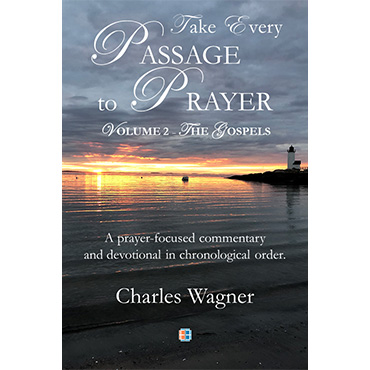The Gramazin Blog

The Genealogy of Jesus: Joseph
Take Every Passage to Prayer - Volume 2, The Gospels
Wednesday May 22, 2024
Matthew 1:1-17
Father, this genealogy is about Jesus, my Savior. He is my King. I ask that You please help me to serve Him forever and ever. Father, thank You for adopting me into Your family because of what Jesus, the focus of this genealogy, has done for me. I am a man who You saved from sin and corruption so that I am now listed in Your version of the genealogy of Jesus Christ. Thank You! Amen.
Father, the Old Testament begins with the statement “In the beginning, God” The text assumes Your existence and does not attempt to prove it. The New Testament begins with a similar declaration about Your Son, Jesus Christ. He is declared to be the “Christ”, the Masiach, the Messiah, the anointed one. He is the one the Old Testament prophecies promised would come, the one who would save the people from their sins. Matthew assumes the reader understands the Messianic character of Jesus and makes no attempt to prove it. It is my understanding that Jesus, which means “God saves”, was a popular first name back in the day. This is why Your Word describes Jesus as “Jesus of Nazareth”, to distinguish Him from other men named Jesus.
Matthew calls Jesus the Son of David. In 2 Samuel 7:11-16, we read that the seed, or “son”, of David will have a kingdom that lasts forever. By ascribing Jesus with the title of Son of David, Matthew is telling us that this Messiah will have an eternal kingdom. Jesus is also described as the Son of Abraham. In Genesis 12:1-3, Abraham is promised that all the peoples of the earth will be blessed by someone who comes from Abraham’s line.
Therefore, Matthew, by the inspiration of the Holy Spirit, makes a bold statement to begin the New Testament:
Jesus Christ is the promised Messiah of the Old Testament who has come to save the entire world and whose kingdom will last forever.
Matthew, the only apostle among the synoptic writers, was a tax collector by trade. He knew how to keep records. He was the one most likely to be asked to take notes at a meeting of Your disciples. He now backs up his statement that Jesus is the Son of David and the Son of Abraham by presenting a genealogy that connects Jesus to these titles.Father, the 42 generations listed in this text do not make a complete genealogy. A study of the Old Testament indicates that generations were skipped in this list. For example, we know from the Old Testament (1 Chronicles 3:15-16) that Josiah was the father of Jehoakim who was the father of Jeconiah. However, Matthew states that Josiah was the father of Jeconiah. The more accurate description of Josiah’s relationship with Jeconiah was that of grandfather.
This genealogy ends with a particularly important statement - it is the genealogy of Jesus’ legal (adopted) father, Joseph, and not the genealogy of his biological father. Jesus has no biological human father. However, many people in Nazareth and the surrounding region believed that Joseph was the biological father of Jesus. Therefore, it was important that Joseph’s own genealogy linked to Abraham and David.
Father, what do we know about the character of Jesus’ ancestors? They were liars (Abraham), murderers (David), adulterers (David and Bathsheba), and prostitutes (Tamar and Rahab). Jehoakim, whose name was not included, was so evil that Jeremiah 36:30-31 records that You said no blood descendent of his will ever sit on the throne of Israel. This meant that no biological son of Joseph would ever be a king; an adopted son is a different story. Jesus is born into the depravity of his adopted father’s family. The Son of God literally could call great sinners as members of His own family, a beautiful metaphor for the invitation of wretched sinners to be adopted into Your family through the gospel of Jesus Christ. By Your inspiration, Matthew shared the gospel even in this seemingly meaningless genealogy.
Finally, Matthew’s genealogy includes the three women mentioned above but also Ruth, a Moabite Gentile. Jesus can legitimately say that his family had Gentile (non-Jewish) roots. Jesus could call Gentiles as part of His family as well. The gospel is for both Jews and Gentiles as God wants all of humanity to come to faith in Jesus Christ. In an ancient culture where women were second-class citizens, Jesus welcomed even them into His family. The gospel invites the outcast and the rejected into Your family.
For those who are willing to peer into Matthew’s genealogy, they will discover the very truths of the gospel shouting from the mundane and seemingly meaningless historical record. You do invite all of the human race to become a member of the family of Jesus Christ, the Savior, whose righteous Kingdom will last forever and ever. Amen.
Footnotes
25. It is generally understood that Matthew, Mark, and Luke have so many similarities that they can be grouped together under the name “Synoptic”. John, on the other hand, is unique and is not grouped with the first three.







